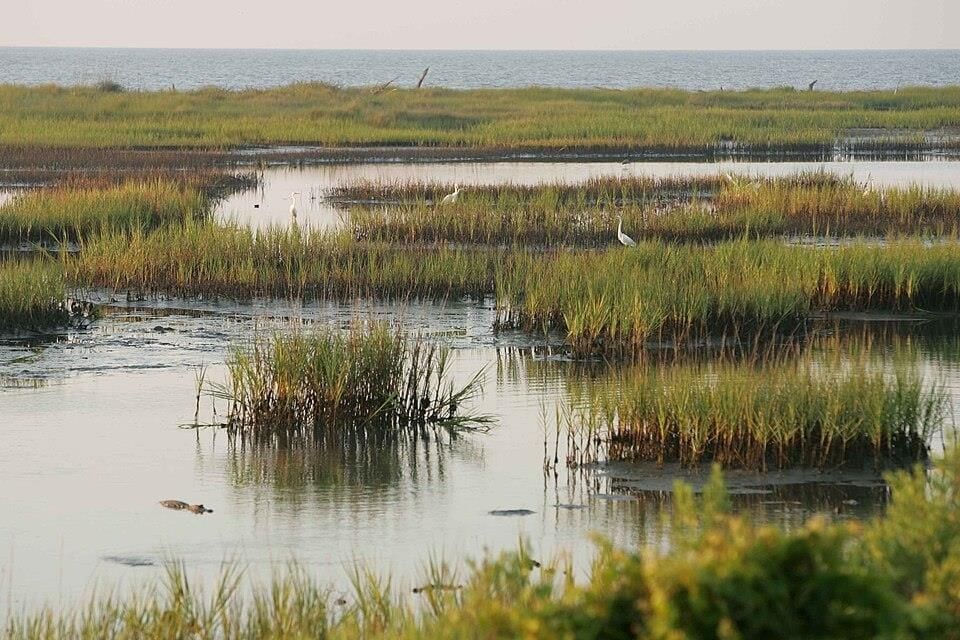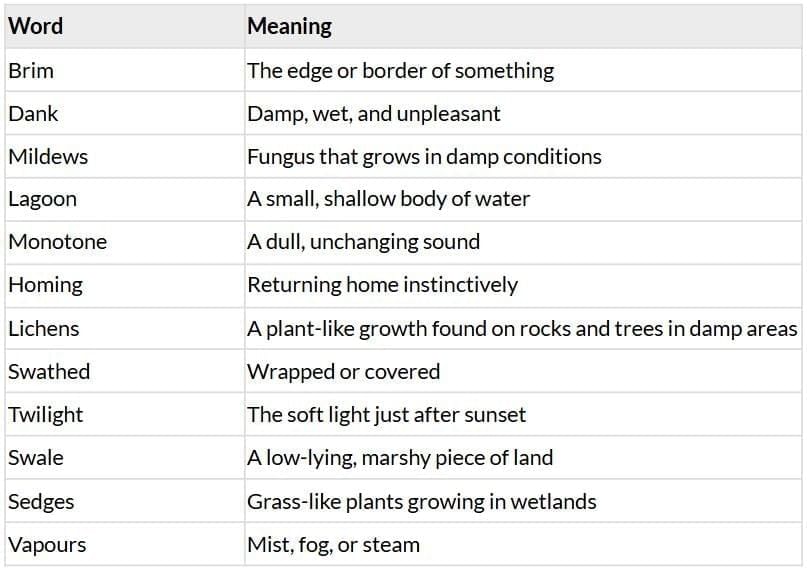Summary: Marshlands | Gul Mohar Class 8: Book Solutions, Summaries & Worksheets PDF Download
| Table of contents |

|
| About the Author |

|
| Detailed Summary (Stanza by Stanza) |

|
| Moral / Message |

|
| Vocabulary Table |

|
About the Author
Emily Pauline Johnson (1861–1913) was a Canadian poet and performer. She was the daughter of a Mohawk chief and an English mother. Her poetry often draws from Native American legends, beliefs, and her deep love for nature. Johnson’s work is known for its dramatic intensity and vivid descriptions.
Detailed Summary (Stanza by Stanza)
Stanza 1
A thin wet sky, that yellows at the rim,
And meets with sun-lost lip the marsh’s brim.
Explanation: The sky appears thin and wet, perhaps with mist or rain. At the edges, it glows yellow, as though it is dawn or dusk. The sun seems hidden, and the marsh merges softly with the sky, creating a dreamy atmosphere.
Stanza 2
The pools low lying, dank with moss and mould,
Glint through their mildews like large cups of gold.
Explanation: The marsh contains low pools filled with moss and mould, giving them a dark and damp look. Yet, when touched by sunlight, they shine through the mildew like golden cups, turning dullness into beauty.

Stanza 3
Among the wild rice in the still lagoon,
In monotone the lizard shrills his tune.
Explanation: In the quiet lagoon where wild rice grows, the sound of a lizard shrilling breaks the silence. The monotone note becomes part of the natural sounds of the marsh.
Stanza 4
The wild goose, homing, seeks a sheltering,
Where rushes grow, and oozing lichens cling.
Explanation: A wild goose, returning home, searches for safety and rest. It finds shelter among the rushes and damp lichens, showing how the marsh provides protection to animals.
Stanza 5
Late cranes with heavy wing, and lazy flight,
Sail up the silence with the nearing night.
Explanation: As evening approaches, cranes fly slowly and heavily, their tired wings blending with the silence of nightfall. Their flight adds to the calm mood of the marsh at dusk.
Stanza 6
And like a spirit, swathed in some soft veil,
Steals twilight and its shadows o’er the swale.
Explanation: Twilight is compared to a spirit wrapped in a soft veil. It quietly spreads shadows over the marsh (swale), giving the place a mysterious and magical feel.
Stanza 7
Hushed lie the sedges, and the vapours creep,
Thick, grey and humid, while the marshes sleep.
Explanation: With night fully arrived, silence covers the marsh. The sedges (tall plants) stand still, and misty vapours spread across the marsh. The whole place is described as if it has gone into peaceful sleep.
Moral / Message
The poem celebrates the quiet beauty of nature in the marshlands. It shows how every detail — from sky and pools to birds and twilight — creates a magical, peaceful scene. The message is to appreciate nature’s stillness and harmony, which contrasts with the noisy, busy world of humans.
Vocabulary Table

|
32 videos|62 docs|17 tests
|
FAQs on Summary: Marshlands - Gul Mohar Class 8: Book Solutions, Summaries & Worksheets
| $1. What are the main themes explored in "Marshlands"? |  |
| $2. How does the author portray the marshlands in the poem? |  |
| $3. What is the moral or message conveyed in "Marshlands"? |  |
| $4. Can you explain the significance of vocabulary used in "Marshlands"? |  |
| $5. How does "Marshlands" relate to current environmental issues? |  |



















